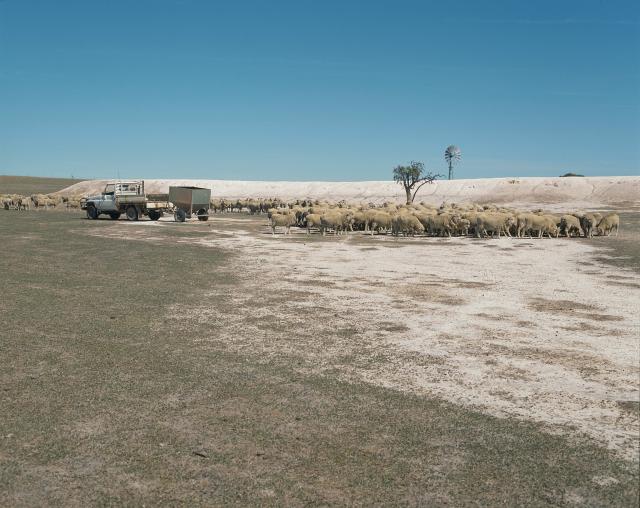Online resources available to help navigate the season in the north and the south
The Department of Primary Industries and Regional Development is monitoring the impact of seasonal conditions in various parts of the State and providing support to affected landholders.
Very dry conditions are continuing in the southern agricultural region, particularly on the south coast, which is currently experiencing decile 1-3 rainfall.
The department and the Bureau of Meteorology’s weather forecasting systems suggest little improvement in rainfall chances for the next three months from March to May.
In the north, large parts of the Kimberley and Pilbara regions are experiencing above average temperatures, with many areas recording below average rainfall during the 2018-19 wet season.
The dry weather has created challenging conditions for landholders, particularly livestock producers in the north and in affected areas of the south.
Agricultural support
DPIRD is working with grower groups and local government in the southern agricultural region to provide timely information and assistance to landholders and to devise scenario plans.
The department’s Season 2019 webpage, has a range of resources to assist with crucial livestock and land management decisions.
With the likelihood of meaningful rainfall still several weeks away, the main issues continue to be the risk of soil erosion, supplementary feeding livestock and available water for livestock.
The latest Landsat ground cover images have identified several areas with low levels of ground cover in the eastern grainbelt, Lakes District and south coast.
The Season 2019 webpage currently features articles on maintaining the quality of on-farm water reserves, strategies to minimise erosion and feed budgeting.
There are also articles in this edition of AgMemo to assist sheep producers to prioritise supplementary feeding plans.
DPIRD is working closely with the Department of Water and Environmental Regulation (DoWER) to monitor community water supplies, as it works with local governments to address district issues.
Pastoral support
DPIRD is assisting industry and northern pastoralists affected by the seasonal conditions by providing dry season information.
In January, the department conducted aerial rangeland condition surveys of parts of the Kimberley and Pilbara regions with an emphasis on assessing broad scale rangeland condition, surface water availability, stream flows, dry standing feed and new pasture growth for livestock.
Staff from the department’s Northern Beef Development and Rangelands programs are supporting pastoralists by providing useful information and advice for the development of dry season management plans.
This and other useful information can be accessed via DPIRD’s dedicated 2019 northern pastoral season webpage, which can also be accessed via the Season 2019 webpage, located on the department’s homepage.
The page includes climate outlooks, advice on how to prepare a forage budget and stocking rates, rangelands monitoring and animal welfare resources.
DPIRD staff at offices located around the State are also available for queries and information regarding livestock and land management throughout the season.
R U OK?
There are links available on both webpages to social support services, including the Rural Financial Counselling Service WA, Beyond Blue Support Service and the Virtual Psychologist.
New research projects to address WA grains production constraints
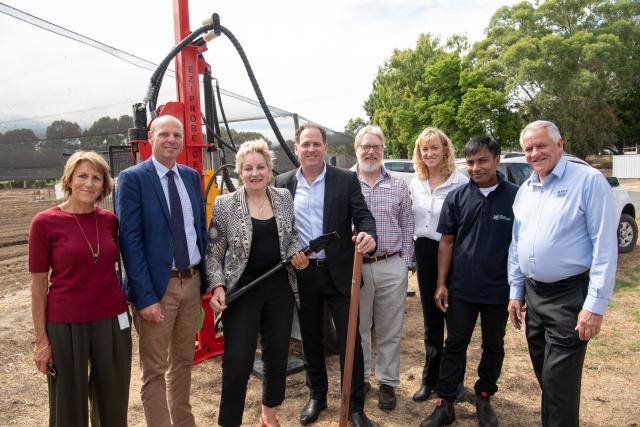
A suite of new grains research projects led by the Department of Primary Industries and Regional Development is about to get underway, as part of a substantial investment by the State Government and the Grains Research and Development Corporation (GRDC) to boost productivity and profitability.
The State Government has contributed $22 million towards three soils projects, together worth $42 million in total over five years.
A further $3 million has been invested by the State towards three pilot projects, worth $6 million over the next three years, to boost oat, canola, lupin and pulse production in Western Australia.
The work will build on the department’s extensive soil amelioration research over the past 10 years, as well as explore new approaches to matching genetics with early sowing opportunities for oats, canola and lupins.
The projects are designed to overcome key WA production constraints and to generate enduring profitability to Western Australian grain growers and transformational benefits across the industry.
Soils projects
Three projects will address the State’s main soil constraints to production, including non-wetting, compaction, sub-soil acidity, sodicity and salinity.
Geraldton research officer Dr Steve Davies is leading a $22.09 million ‘Re-engineering soils to improve the access of crop root systems to water and nutrients stored in the subsoil’ project, over five years.
This work will address multiple, interacting soil constraints in the crop root zone, by applying strategic combinations of soil amelioration techniques or by full soil profile re-engineering.
Soil profile re-engineering is the fundamental redesign of soil profiles to achieve dramatic improvements in critical measures of cropping performance, including water and nutrient use efficiency, grain yield and grower profitability.
Esperance senior research officer David Hall is heading up a four-year, $4.08 million project to ‘Increase grower profitability on soils with sodicity and transient salinity in the eastern grain belt of the Western region’.
Interacting combinations of sodicity and transient salinity are often associated with high subsoil pH, ion toxicities (mainly boron) and poor subsoil structure, which interact to prevent crop roots from accessing water.
This project will explore and develop management options for soils affected by these constraints to improve plant root water accessibility and resulting yields.
Dr Davies and his Geraldton colleague, research officer Christine Zaicou-Kunesch, are leading the five-year ‘Increasing farming system profitability and longevity of benefits following soil amelioration’ project, worth $15.48 million.
This project seeks to sustain the gains from new soil amelioration and amendment treatments by identifying management changes that will preserve the benefits of soil amelioration.
The work will determine the most profitable crop rotations, species choice and seedbed preparation to sustain long-term benefits from soil amelioration while managing risks, such as wind erosion and poor crop establishment.
Agronomy projects
Northam research officer Georgie Troup is the leader of a two-year project to ‘Investigate the phenology diversity in germplasm and levers to optimise profitability from April sown oats’, worth $1.55 million.
The project will evaluate the phenology of a wide range of germplasm at two contrasting sites, Northam and Katanning, to identify suitable breeding lines for early sowing in WA.
Researchers will also develop agronomic packages for medium to high rainfall areas, to ensure new varieties meet stricter milling oat quality specifications.
Research officer Mark Seymour, based at Esperance, will spearhead a $2.26 million, three and a half year project to ‘Raise awareness, optimise yield and expand the area sown to lentils, chickpeas and faba beans in WA’.
This project will draw from GRDC-backed pulse research from across Australia to develop production packages to provide growers with evidence-based information, knowledge and confidence to sow these crops.
This project seeks to support an increase in lentil production in WA to 40,000 hectares in the next five years, and faba bean production to 20,000ha and chickpeas to 70,000ha.
A $2.09 million project to ‘Expand the sowing window for canola and lupin in WA’ is being led by Geraldton research officer Martin Harries for the next two and a half years.
This research will provide WA growers with agronomic insights on ways to boost the yield and profitability of canola and lupin crops by capitalising on early sowing opportunities and will include identifying commercial canola and lupin varieties that are likely to be better adapted to very early sowing.
Transformational change
DPIRD is well placed to deliver these projects, many of which have evolved from years of department soil, nutrition and agronomy research.
These projects will also explore new cropping opportunities, complementing the department’s long-term break crop work.
The WA grains industry can be assured DPIRD has both the resources and the expertise to help it take production to the next level, backed by our highly qualified, passionate staff based throughout the grainbelt, dedicated facilities – including the Northam Grains Research Facility – and extensive field work with growers.
More information about these and other DPIRD grains projects can be found on the department's website.
Value adding grants
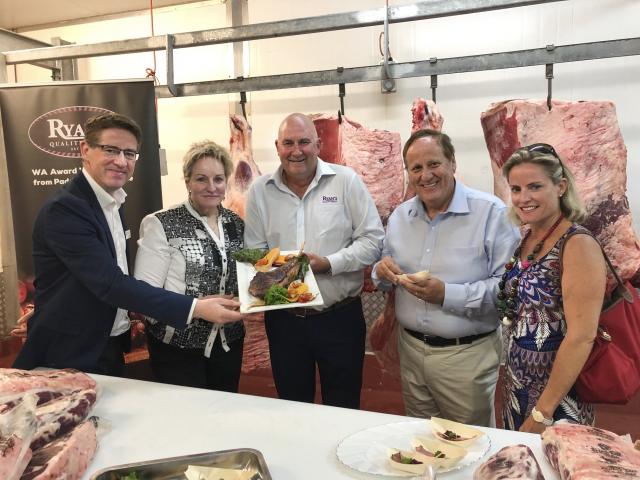
WA leads the country in our bulk primary product exports – on the back of our grains, sheep and cattle industries, the value of our unprocessed product exports is more than $1 billion more than our next competitor, Victoria.
But traditionally we have not performed so well on value-added exports.
We are the only state whose processed export value sits considerably below our bulk exports.
And while there is no doubt our agricultural sector will always rely on the big hitters of grains, sheep and cattle, we have a real opportunity to drive more value out of our high-quality agricultural products.
Our government is investing in a number of initiatives to support and develop WA agribusinesses to thrive and prosper, to the benefit of regional communities, industry and the economy.
One of these initiatives is the Value Add Agribusiness Investment Attraction Fund, to encourage businesses to invest in growth and diversification.
The $3.1 million investment in matching grants is supporting capital investment and business expansion, which is expected to generate more than 100 jobs in the regions over the next 18 months.
Last month we announced 23 Value Adding grants to help a whole range of businesses take their enterprise to the next level.
Grant overview
The grants were designed to support businesses to confidently invest in new projects or expansion opportunities that will build competitiveness, grow their operations, and stimulate job creation.
The program was structured into two streams to support businesses at different stages of development:
-
Capital Investment Funding Grants of up to $300,000 per business to assist expansion, relocation or new value adding production facilities.
-
Pre-feasibility, Planning and Approvals grants of up to $100,000 to help finalise business planning and feasibility analysis, obtain regulatory approvals, financial analysis, planning and other services to support an investment decision to expand, relocate or establish production facilities in WA.
Applicants needed to contribute matching funds and demonstrate how the funds will be leveraged.
The grants are expected to generate more than $12.5 million in total co-investment and create an estimated 128 jobs in the regions.
Grant recipients
Capital Investment Funding Grants, totalling $2.68 million, were allocated to 16 successful applicants, spread across the State and industry.
Recipients included three seafood operators, three meat processors, four beverage enterprises, five food agribusinesses and a stock feed processor.
At Ryan’s Meats in Bunbury we saw first-hand the benefits of this scheme – a family-owned business that has partnered with Pardoo Station in the Pilbara to deliver high-quality WA beef to top-end markets in Singapore and South East Asia.
Our grant funding will help them expand their facilities to Tier 1 export status, kick-starting a new export opportunity that will drive jobs in the South West and pastoral growth in the North West.
Pre-feasibility, Planning and Approvals grants, totalling $486,000, were allocated to seven applicants from the Kimberley to the South West to progress towards three meat processing ventures, three food opportunities and a beverage processing.
For a full list of recipients and project descriptions click here.
Business support initiatives
The pilot program attracted enormous interest – so much so that we added an extra $1.5 million into the program just to keep up with demand.
This is a fantastic indicator of the interest in value-adding in WA.
The program is just one of the State Government’s commitments to encourage business investment, development and expansion, which includes investor readiness support to businesses, investment attraction and promotion of WA as a great place to invest, investment facilitation, and regulatory approval support.
More information about these endeavours and DPIRD’s investment program can be found on our website.
Coastal radar upgrade commences to make WA’s weather monitoring service the nation’s best
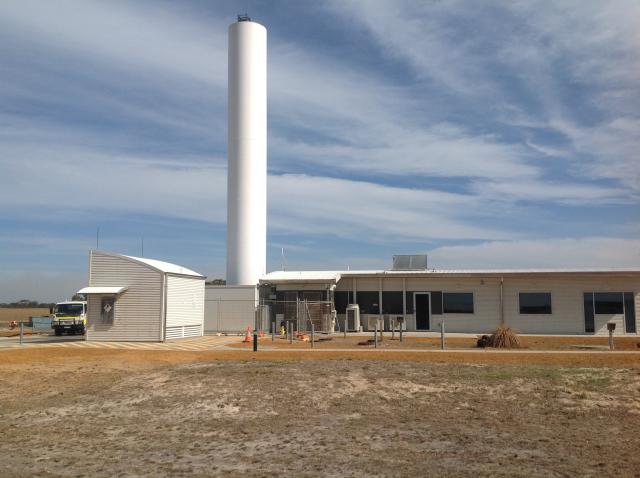
Works have commenced to upgrade the State’s coastal radar network to Doppler capability, which will make Western Australia home to the nation’s best weather monitoring service.
The WA Government has funded the $4.6 million upgrade to the Bureau of Meteorology's (BoM) Albany and Geraldton facilities, adding to the State’s Doppler radar installations at Newdegate, Watheroo and South Doodlakine.
WA’s agricultural region will have almost complete Doppler radar coverage when the upgrade is finished and the BoM completes its planned Esperance Doppler installation in 2020.
Doppler radar benefits
The Albany and Geraldton upgrades mark the introduction of a new generation of Doppler radar technology, the first of its kind to be installed in Australia.
The dual-polarimetry technology provides opportunities to extend the range of high quality observations from a 120 kilometre radius up to 150km over a 24 hour period.
The new Doppler radars will provide more accurate and detailed real time weather data, including rainfall intensity, as well as wind speed and direction, updated every six minutes on the BoM and Department of Primary Industries and Regional Development (DPIRD) websites.
The technology will allow for better observations of where rain is falling, how heavy, and accumulations over a square kilometre. This will enable landholders to make more informed crop, livestock, and land management decisions, based on more reliable, higher resolution information, when combined with free online data from DPIRD’s network of 175 automated weather stations and BoM’s network of 85 sites.
The Doppler radar information will assist landholders to optimise the time of sowing, spray applications, harvest options, and movement of livestock. As rural properties become increasingly large, this information will become more vital, because weather conditions can vary significantly across landholdings.
The improved service will also provide aviation safety and emergency services with more detailed weather information to better assess conditions to support responses to storms, bushfires, and land and sea rescues.
Alternative data sources during upgrade
The Albany Doppler radar is expected to return to full service in mid-May, and the Geraldton radar is scheduled to return to service in mid-June. While the services are offline, landholders and other stakeholders can still access timely weather observations and forecasts covered by the radars.
Real time wind and rainfall data will be available via DPIRD’s online weather pages, as well as BoM’s MetEye , Satellite View and Observations webpages.
BoM also has Doppler radars at Serpentine and Kalgoorlie, and some residents on the edge of affected areas may be able to use radar images from DPIRD’s Newdegate and Watheroo Doppler radars.
DPIRD’s weather pages have recently been updated to make it easier to navigate and tailor information to the user’s requirements, assisted by a series of instruction videos.
The department has a range of climate and weather information to assist landholders, including rainfall to date, soil water, potential yield, and extreme weather event tools, as well as the latest Statistical Seasonal Forecast. For more information, click here.
Esperance grains and sheep farmer takes out 2019 Rural Women’s Award
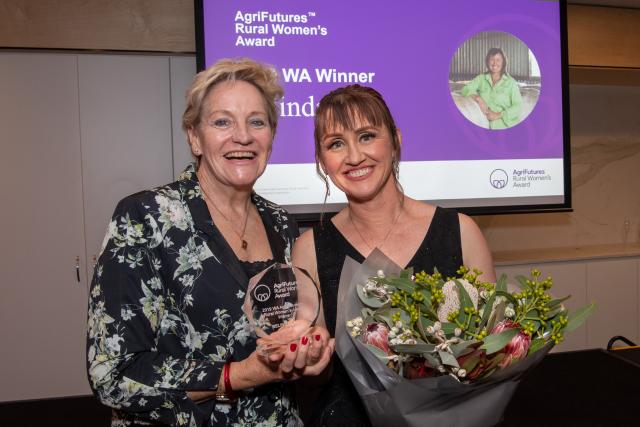
Esperance-based grains and sheep farmer Belinda Lay was announced as the Western Australian winner of the 2019 Agrifutures Rural Women’s Award at an awards ceremony held in Perth earlier this month.
Over that past two decades, the award has acknowledged and supported the essential role women play in rural businesses, industries and communities. The award provides a platform to inspire and support Australian women to use and develop their skills to benefit their industries and communities.
Mrs Lay received a $10,000 bursary to help progress her on farm discoveries through collars that monitor sheep. The data collected through the activity trackers include the animal's temperature, GPS location and daily activity.
Mrs Lay said the idea came about one day when she commented to her husband on how great it would be if sheep could just walk up and bleat their troubles.
“Then I found a solution, a sheep ‘fit bit’ style activity tracker that will collect data I can view on my mobile phone. The technology has the ability to detect any unusual statistics so I can locate the sheep and attend to its needs,” she said.
“Issues such as broken fences or open gates will no longer cause so much trouble – an errant sheep or escaped flock can be located through GPS and they can be rounded up before they go missing or crops are destroyed.”
Mrs Lay was one of four innovative finalists:
- Leah Boucher – Kambalda-based information technology service provider
- Tanya Kitto - Geraldton lupin-grower and value-add business owner, changing the view of lupins as food
- Juliet Grist - Denmark-based economist, developing community engagement to achieve collective impacts.
As well as the $10,000 bursary, Mrs Lay will be given access to alumni networks and professional development opportunities, including Curtin University’s Ignition program.
She will also be a candidate for the national 2019 Rural Women’s Award in October.
New to the WA export market?
WA Agribusinesses that are new to or looking to start exporting are invited to attend complimentary roundtable breakfasts with industry experts this year.
The first session on 1 February saw export champions Joseph Ling, Managing Director of AGRIFresh; Sharon Bosveld, owner of Churchview Estate; and Annemette Thomsen, International Business Adviser sharing their experiences and lessons learnt, providing practical and real-world advice to their eager audience. They tackled questions such as how to manage payment terms, how to choose an in-market partner and how much a first order should be. Participants took away key messages on making their product stand out from competitors, promoting their business, the importance of research and the value of building market relationships into the future.
The second session held on 1 March focussed on addressing non-tariff barriers and red tape. Heath Baker, Head of Trade and Policy at the Export Council Australia shared the importance of being actively engaged with industry associations, state and federal governments as well as in-market partners. Participants left the session with the understanding that these connections assist with highlighting any non-tariff issues and barriers to multiple support export channels.
According to participants, the opportunity to network with like-minded businesses to deepen their understanding of business growth and export provides value in attending these sessions.
The roundtable breakfasts are presented by the Department of Primary Industries and Regional Development, in collaboration with the Export Council of Australia. They are part of the department’s Asian Market Success and Food Industry Innovation projects that will provide WA Agribusinesses with the confidence to invest in accessing and developing high value, premium export markets in Asia.
Contact the Asian Market Success team if you are a WA Agribusiness keen to explore export opportunities.
Premium food and beverage businesses learn to increase product value
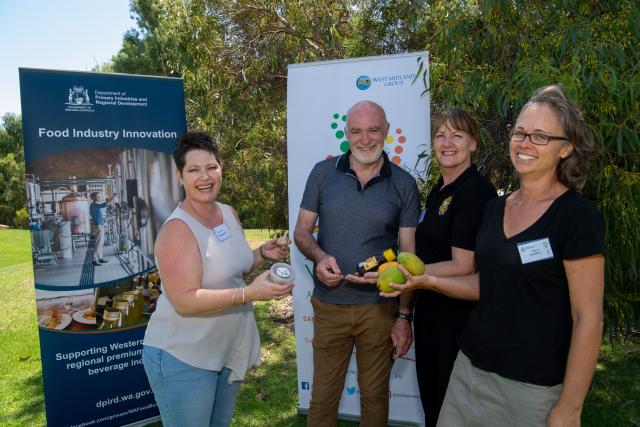
Global markets trends, and how to increase the value for agricultural products were some of the insights provided at retail marketing workshops held recently in Denmark, Katanning, Geraldton and Gingin.
Delivered by the Department of Primary Industries and Regional Development’s Food Industry Innovation project, the workshops taught small and medium premium food and beverage businesses the latest market trend information, tools and methods to market their products in a changing consumer market and how achieve business growth.
Department Food Industry Innovation project manager Kim Antonio said the workshop was presented by John Stanley, an award winning Nannup-based food and agri-tourism consultant and owner of Chestnut Brae.
“Participants learned effective ways to realise market opportunities, taking into consideration constantly changing consumer and retail demands,” Mr Antonio said.
“The basics of marketing were covered, such as understanding consumers and the supply chain and profiling the aspect of a product or service that makes it unique.
“Mr Stanley encouraged participants to consider what the world wants and target their products and services accordingly, as well as contemplate their position in the value chain and how they can best add value to their product.”
Trends that affect buying were highlighted, such as price, convenience-led and experience economies, and increased interest by consumers in natural products. A range of marketing tools, methods and steps were also discussed, including customer communication channels, branding and marketplace tips enabling participants to develop a marketing toolkit that will work best for their business.
Post workshop surveys indicated all respondents agreed they have a better understanding of marketing and planned to apply this new knowledge and information to improve their business.
Further workshops are planned for Merredin and the South West in June 2019. To register your interest, please contact the Department’s food industry innovation project.
WA fisheries and aquaculture value grows: ABARES report
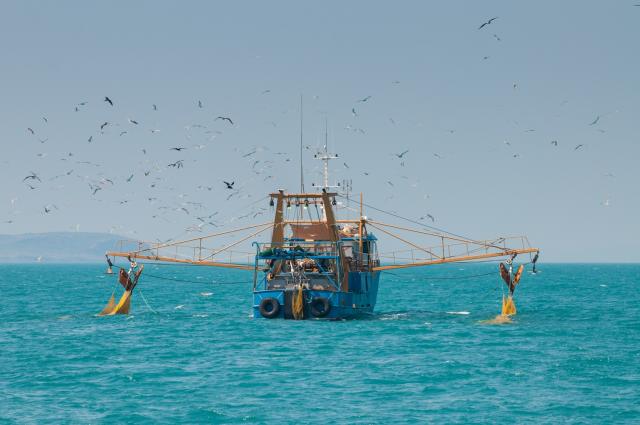
Western Australian fisheries and aquaculture production continues to grow, making it the second largest in Australia.
According to the recently published Australian Bureau of Agricultural and Resource Economics and Sciences (ABARES) Australian fisheries and aquaculture statistics 2017 report, Tasmania had the largest gross value of production (31%), followed by WA (20%) and South Australia (16%).
In 2016/17 the gross value of WA fishery and aquaculture production increased by 5% to $620 million, while the production volume increased by 12% to 23,818 tonnes.
Fisheries production in WA is dominated by wild-catch fisheries, principally rock lobster production, comprising 78% of the total value over the 10 years to 2016/17.
Wild catch
WA’s wild-catch fisheries increased in value by 5% in 2016/17 to $530 million, with rock lobster production contributing to 76% of the total value worth $401 million, up by 2%, reflecting an increase in production value.
The commercial rock lobster fishery operates between Shark Bay and Cape Leeuwin, using baited traps (pots) by more than 200 vessels, under a quota management system.
The value of scallop production more than tripled to a value of $15 million, as the industry increased production following recovery from the impacts of a heat wave in 2011/12.
WA’s two main scallop fisheries, based in Shark Bay and the Abrolhos Islands, were hit by the marine heatwave in 2010/11, which substantially impacted both stocks, and resulted in a decision in 2012 to temporarily close both of these scallop fisheries.
The Department of Primary Industries and Regional Development (DPIRD) worked closely with industry to help it adapt to the new environmental and economic conditions, undertaking regular surveys, developing a recovery plan and providing financial support through the deferment of licence fees during years when the fisheries were closed.
The Shark Bay fishery re-opened in late 2015 and quotas more than doubled during the 2016/17 financial year as stocks recovered, while the Abrolhos fishery re-opened during 2017 for the first time in five years.
Aquaculture
The gross value of WA aquaculture production increased by 1% in 2016/17 to $90 million.
Finfish production, largely barramundi, more than doubled during the period to $13 million, due to improved production capability and increasing inventory stocks.
WA’s main barramundi aquaculture operation is located in the Kimberley, with smaller land-based enterprises found throughout the agricultural region.
The department has undertaken extensive research to support the development of the industry in the past and continues to provide juvenile seed stock to industry from its Fremantle hatchery.
The ABARES report also notes the value of pearl production declined by 10% to $70 million in 2016/17, which is consistent with yearly fluctuations in the figures recorded by the department from data provided voluntarily by industry operators.
Catch in the pearl oyster fishery is primarily managed via an annual quota system, which sets a maximum number of wild stock pearl oysters that can be caught each year by the 15 licence holders.
Wild catch industry development
DPIRD continues to support the development of the WA wild catch production through ongoing monitoring and assessments of fish resources and the broader ecosystem, to inform the development of sustainable management systems for the commercial and recreational fisheries.
WA is a world-leader in sustainable fisheries management, with ‘gold standard’ sustainable fisheries management certification from the international Marine Stewardship Council (MSC).
The State now has eight MSC certified fisheries – Western rock lobster, wild-caught abalone, Exmouth Gulf prawn, Shark Bay prawn, Peel Harvey Estuary commercial and recreational blue swimmer crab, Peel Harvey sea mullet, Australian west coast deep sea crab and the West Coast Silver lipped pearl fishery.
Aquaculture industry development
DPIRD is supporting the development of sustainable marine aquaculture in WA through several initiatives, including the transfer of the Fremantle finfish hatchery to the department and the establishment of the Albany Shellfish Hatchery.
In 2018, a $1 million upgrade of the Aquatic Animal Health Laboratory was announced, to explore options for a marine finfish nursery and the declaration of two regional aquaculture zones for marine finfish.
Aquaculture development zones have been established in the Kimberley and Mid West to provide ‘investment ready’ platforms, where the State Government has secured strategic environmental approvals, thereby saving investors considerable set-up costs.
Each zone is supported by a Management Framework to guide ecologically sustainable development.
These zones have generated opportunities for new and existing aquaculture operations (fish farms) to expand, which will produce increased economic benefits to the local community via job creation and regional economic diversification.
Since the zones were declared, the operator in the Kimberley has been significantly expanding production and the Mid West zone has now been fully allocated.
At full capacity, the two zones could produce over 60,000 tonnes of fish annually, worth more than $600 million, creating about 5,000 jobs.
Further details about WA’s aquaculture development zones operate is available here.
For more information about how DPIRD’s supports WA’s commercial fishing industry and fisheries management activities click here.

